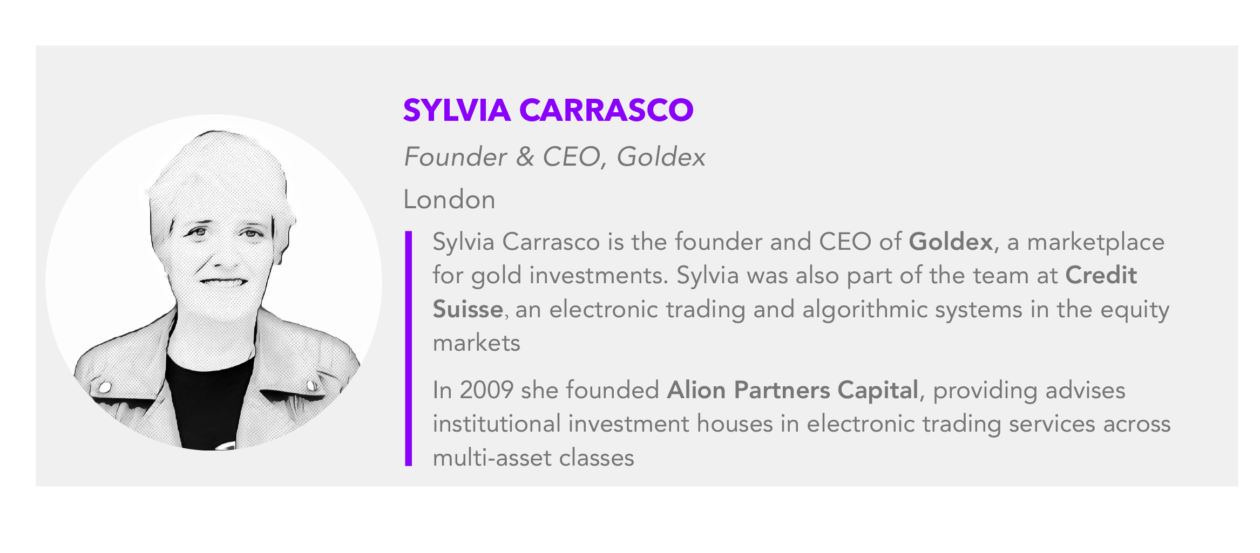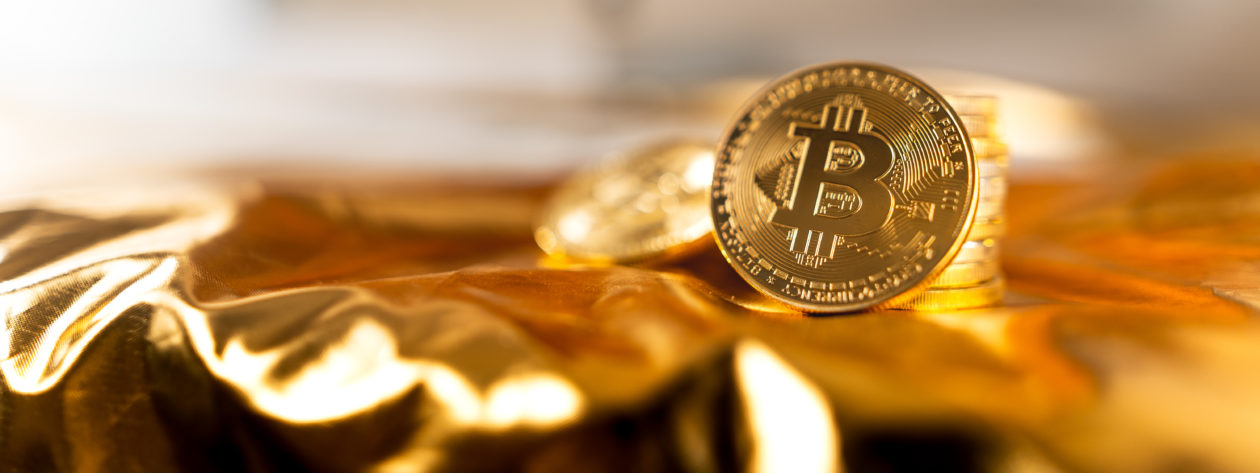Crypto vs. gold — the battle is vitriolic and eternal. The extremes on either side represent the most die-hard acolytes, giving neither ground nor favor to their counterparts.
Yet, as is the case in so many seemingly existential battles, it pays to look beyond the constant onslaughts of both sides and examine the vast common ground that exists between the two sides that neither the cryptokids nor the goldbugs care to admit even exist. Or at least used to.

The choice isn’t binary
For a certain type of investor, gold is a worthless relic with little utility whose allure is based on myth, fantasy or religion.
These investors see that the world has moved on. Technocratic central banks successfully regulate the financial system. Paper-currency economics has brought technological wonders to humanity while, at the same time, vast money-printing and huge government debt have become perfectly acceptable.
Inflation is not a problem and, if it were, the tools exist to control it. For this school of thought, gold is an irrelevance and so is crypto. Neither are needed since humanity is doing such a great job and will continue to do such a great job. No gold, no crypto, no thanks — fiat is fantastic!
For everyone else, even a cursory glance at history would render such unbridled optimism in our species a little over the top. Empires crumble, power shifts, governments collapse, money is printed and currencies devalue. The graveyard of infinite empires and their everlasting currencies stretches beyond a horizon littered with the hubris and arrogance of their long-forgotten rulers.
As Hegel said, “history teaches us that history teaches us nothing.”
But some do learn. They read, they study and they challenge the status quo. They understand the frequency of devaluations, money printing, hyper-inflation and the false prophets who proclaim, “this time it’s different.”
It never is.
Long live crypto and gold
History is a collection of cycles of the same stories, just with different names and places.
It is this philosophical underpinning that connects the crypto enthusiasts and goldbugs. It is not just the extremes that believe it. Millions of investors have flocked to crypto and gold in recent years, fearful of the huge debt and currency debasement that has been occurring in recent times.
At the core is a fundamental distrust of human power and claims to authority, backed by the lessons of history. Both see their preferred asset — crypto or gold — as a way of protecting their wealth and purchasing power. It is easy to see why. With an inflation rate of 2%, it takes less than 25 years to lose 50% of a currency’s purchasing power.
So, the rise of crypto and the enduring popularity of gold is not only understandable but also totally logical. The conflict between the two sides did not make sense.
Both gold and crypto sit outside of the traditional financial system and, even more importantly, the political system. Both have decentralized pricing, are finite (at least most cryptos are), and can be viewed as a store of value (as crypto volatility decreases) and a future medium of exchange (as both crypto and electronic physical gold become more common).
Thus, the debate is rapidly shifting. Indeed, it has shifted.
Gold will not be replaced by crypto. Crypto is unlikely to disappear.
Rather than opposing one another, savvy investors are taking a far more nuanced view. The debate is no longer gold versus crypto. Both play their part in hedging the risk of the time-honored historical certainty of currency debasement and money printing.
“Gold vs crypto” is dead. Long live “gold AND crypto.”
Gold and crypto are no longer just for the doom-mongers
Traditional banking is dead. We are now witnessing its gradual decline. The future of banking looks to be almost exclusively app-only.
Fintechs that compete in the space need to offer a high-quality product across every part of their businesses. For their long-term customer acquisition and retention strategies, they must offer access to both gold and crypto.
Avoiding the banks
In recent years, particularly before the financial crisis of 2008, the idea of investing in gold was a concept for the very rich. For most normal people, gold meant jewelry. Dealing with storage, insurance and opaque pricing all made owning physical gold rather cumbersome. Additionally, very few understood why it was important to own gold.
2008 changed everything.
At first slowly but then quickly, central banks abandoned all restraint, independence and prudence and, instead, went hell-for-leather with asset-purchase programs, balance-sheet expansion, money printing and a murky myriad of monetary shenanigans. The result was, of course, huge asset price inflation. Stocks, property and rents all soared and continue to soar.
It has not gone unnoticed. Slowly but surely the world outside of finance can see inflation in their goods, wage stagnation and little-to-no interest being paid on their bank balances. Fiat-only is not good enough. The kids know what is happening. Millennials and the even-younger who follow them get what is happening to the system.
They understand crypto. They see inflation. They see housing becoming completely unaffordable. They see their wages stagnating.
They see their parents’ lives and can only dream of being in a similar situation.
They understand that the same arguments in favor of investing in crypto are the exact same arguments for physical gold. The mindset of the crypto buyer is the same as the mindset of the gold buyer.
So fintechs have to offer cryptos and, therefore, physical gold.
Many institutions seek to offer gold exposure via structured notes, exchange-traded funds, unallocated gold, gold cryptos and more. However, doing so defeats the whole purpose of investing in gold. Using an ETF or other non-physical form of gold actually puts you back in the banking system.
Nothing beats ownership
ETFs, unallocated physical gold and others only give exposure to gold, not ownership.
You don’t own the gold. The point is worth repeating: you don’t own the gold.
What you do own is a product with a tangled web of counterparties that creates the impression that you own gold. But you don’t.
There is only one proper way to own gold: by buying allocated physical gold.
The savvy, in-the-know crypto crowd won’t accept certificates, ETFs, unallocated gold or notes that track gold.
No substitutes. No proxies. They want the real deal.
Portfolio management
The last decade or more saw the emergence of new change-makers in the form of ubiquitous mobile phones combined with a popular new currency called crypto.
The stage was thus set for the emergence of personal-finance and investment apps that give investors the power to control their financial destiny — already offer both bespoke and standardized robo-advisory, debt, trading and investment services. They offer each app user financial opportunities tailored to their preferences, situation and goals.
Apps must offer everything in one place. We’ve seen them race to fill out their product offerings over a short space of time. Their customers demand everything. They want access to insurance, payments, budgeting, credit cards, loans, mortgages, currency and investment portfolios from one app.
One app for everything financial. One app to rule them all.
It would be inconceivable that fintechs offer this service without a core tenet of portfolio management: allocated physical gold.
Furthermore, as can be seen with the Basel III rules, the world is quickly moving towards gold as an allocated physical asset, rather than via synthetic ways of gaining exposure as with ETFs.
The end of the debate
The battle is over. Enemies have become friends. For far too long, gold and crypto have been viewed as alternatives to one another.
But the debate has been settled. Crypto is here to stay and of course, so is gold.
Consumers want both and, when it comes to gold, they want the physical variety — not some half-baked vehicle that only gives exposure.
As the whole world becomes banked and asset-managed by fintechs, the absolute minimum standard will be to have access to crypto and allocated physical gold as complementary, rather than opposing products.
Fintechs have to offer allocated physical gold.




